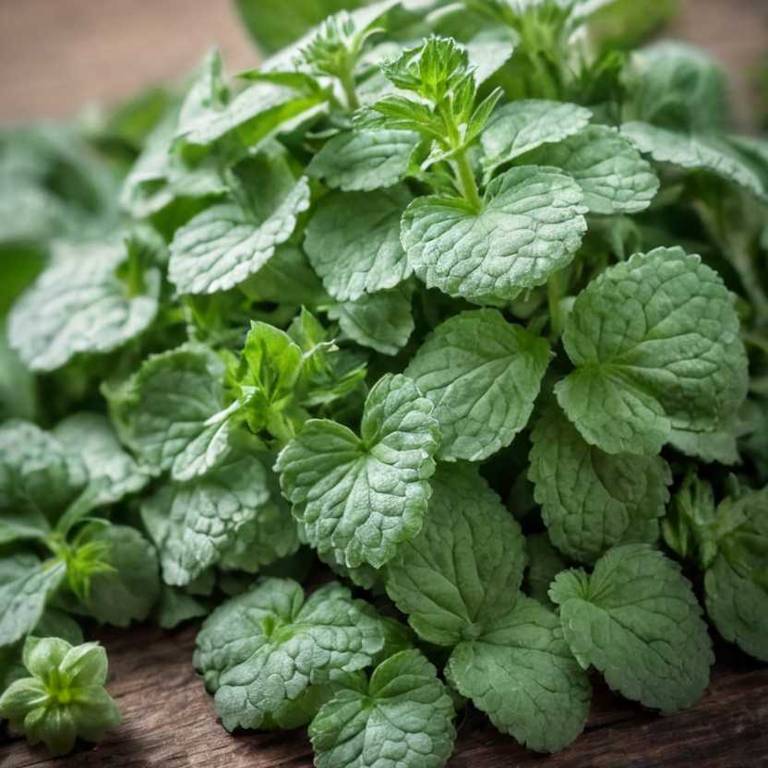10 Best Lamium Album Preparations

The best medicinal preparations of Lamium album are teas, decoctions, mucillages, poultices, and tinctures, each offering unique therapeutic benefits.
Teas made from dried leaves and flowers are commonly used to soothe digestive issues and promote relaxation.
Decoctions, which involve boiling the plant material, are effective for extracting stronger medicinal compounds.
Mucillages, derived from the plant's gelatinous properties, are used to coat the throat and aid in respiratory conditions.
Poultices made from fresh leaves can be applied topically to reduce inflammation and heal wounds, while tinctures provide a concentrated form for internal use.
Below there's a list of the 10 best herbal preparations of lamium album for medicinal purposes.
- 1. Teas
- 2. Decoctions
- 3. Mucillages
- 4. Poultices
- 5. Tinctures
- 6. Baths
- 7. Oils
- 8. Creams
- 9. Juices
- 10. Capsules
1. Teas
Lamium album teas is commonly used to support digestive health and alleviate symptoms of mild gastrointestinal discomfort.
This herbal preparation is often employed to treat ailments such as indigestion, bloating, and mild stomach cramps. The bioactive constituents responsible for its medicinal properties include flavonoids, tannins, and mucilage, which contribute to its anti-inflammatory and soothing effects. Additionally, it may help reduce fever and promote relaxation, making it useful in managing mild respiratory conditions.
Its gentle nature makes it a popular choice for herbal remedies in traditional medicine.

2. Decoctions
Lamium album decoctions is commonly used to treat digestive issues, such as indigestion, nausea, and gastrointestinal spasms.
This herbal preparation is also utilized for its calming effects on the nervous system, helping to alleviate anxiety and promote relaxation. The most common medicinal uses include addressing digestive disorders, respiratory conditions like coughs and bronchitis, and as a mild sedative. The bioactive constituents responsible for these effects include flavonoids, tannins, iridoids, and essential oils, which contribute to its anti-inflammatory, antispasmodic, and soothing properties.
These compounds work synergistically to support overall wellness and address a range of health concerns.

3. Mucillages
Lamium album mucillages is commonly used to soothe inflammation and irritation in the digestive tract, respiratory system, and skin.
This herbal preparation is most frequently employed to treat ailments such as gastritis, ulcers, coughs, and skin conditions like eczema or wounds. The bioactive constituents responsible for its medicinal properties include mucilage, which forms a protective layer over mucous membranes, as well as flavonoids and tannins that possess anti-inflammatory and astringent effects. Additionally, it contains polysaccharides that contribute to its demulcent and healing properties.
These components work together to provide relief and promote tissue repair in various inflammatory conditions.

4. Poultices
Lamium album poultices is commonly used to treat skin conditions and inflammatory disorders.
This herbal preparation is often applied topically to reduce pain, swelling, and irritation associated with wounds, rashes, and insect bites. It is also used for its soothing effects on burns and other skin irritations. The bioactive constituents responsible for its medicinal properties include flavonoids, tannins, and mucilage, which have anti-inflammatory, astringent, and wound-healing properties.
These compounds work together to promote skin regeneration and provide relief from various dermatological issues.

5. Tinctures
Lamium album tinctures is commonly used to treat ailments such as digestive issues, respiratory conditions, and skin irritations.
These tinctures are often employed to alleviate symptoms of indigestion, coughs, and inflammation. The medicinal properties of Lamium album tinctures are attributed to bioactive constituents such as flavonoids, iridoids, and essential oils. These compounds possess anti-inflammatory, antimicrobial, and antioxidant effects.
Additionally, they may support immune function and promote overall wellness.

6. Baths
Lamium album baths is commonly used to soothe skin irritations and promote relaxation.
This herbal preparation is often employed to treat conditions such as eczema, psoriasis, and minor skin infections due to its anti-inflammatory and antiseptic properties. It is also used to alleviate symptoms of rheumatism and muscle pain by improving circulation and reducing inflammation. The bioactive constituents responsible for these effects include flavonoids, tannins, and saponins, which contribute to its healing and soothing actions.
Additionally, the presence of mucilage helps to moisturize and protect the skin during bathing.

7. Oils
Lamium album oils is commonly used to treat skin conditions, digestive issues, and respiratory ailments.
The oil is often applied topically for its soothing effects on wounds, eczema, and insect bites. It is also used internally to alleviate symptoms of indigestion, nausea, and coughs. The bioactive constituents responsible for these effects include flavonoids, tannins, and essential fatty acids, which possess anti-inflammatory, antimicrobial, and antioxidant properties.
Additionally, the presence of iridoids such as aucubin contributes to its therapeutic benefits.

8. Creams
Lamium album creams is commonly used to treat skin conditions and inflammatory disorders.
These creams are often applied for their soothing effects on eczema, psoriasis, and minor burns. The most common medicinal uses include alleviating symptoms of skin irritation, reducing inflammation, and promoting wound healing. The bioactive constituents responsible for these effects include flavonoids, tannins, and mucilage, which have anti-inflammatory, astringent, and emollient properties.
These compounds work together to provide relief and support skin health.

9. Juices
Lamium album juices is commonly used to treat ailments such as respiratory infections, skin conditions, and digestive issues.
The preparation is often applied topically or ingested in small quantities to harness its therapeutic effects. It is widely recognized for its anti-inflammatory, antimicrobial, and antispasmodic properties. The bioactive constituents include flavonoids, tannins, saponins, and essential oils, which contribute to its medicinal benefits.
These compounds help reduce inflammation, combat pathogens, and support gastrointestinal health.

10. Capsules
Lamium album capsules is commonly used to treat digestive issues, such as indigestion, bloating, and nausea, as well as to support the immune system.
They are also used for their calming effects to reduce anxiety and promote relaxation. The most common medicinal uses include alleviating symptoms of gastrointestinal disorders, respiratory conditions like coughs and colds, and mild inflammatory conditions. The bioactive constituents responsible for these effects include flavonoids, tannins, and mucilage, which have anti-inflammatory, antimicrobial, and soothing properties.
These compounds help to protect the mucous membranes of the digestive and respiratory tracts.
